
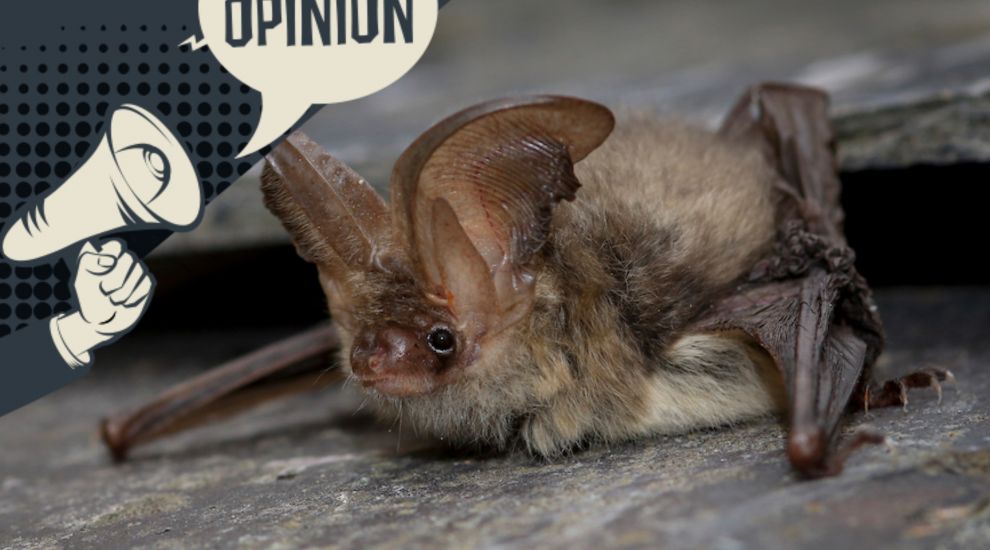

As we move into Spring and the weather warms up, bats are beginning to come out of hibernation and if you are outside during and shortly after dusk you may well spot some flying around.
Bats are fascinating animals; they are the only true flying mammals with their forelimbs adapted as wings and they make up a staggering quarter of all British mammals.
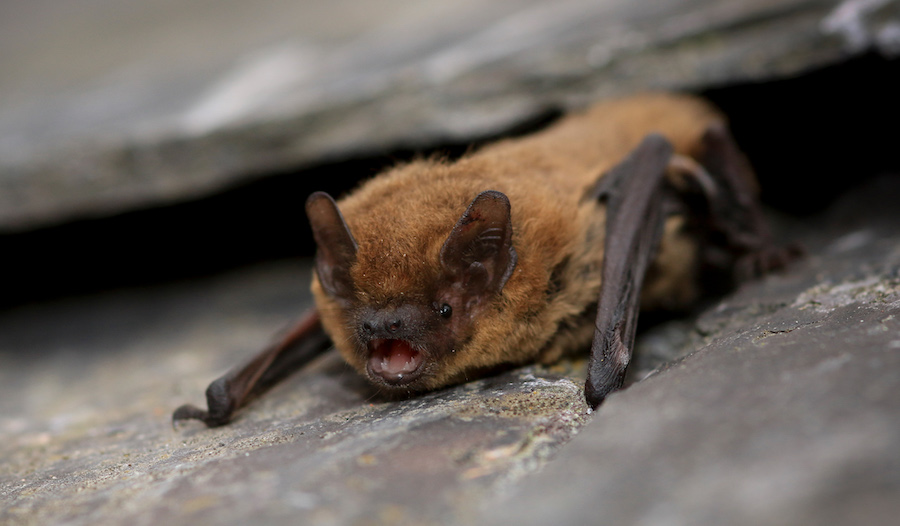
Pictured: Common Pipistrelle (Image credit: Tom Marshall).
Bats are nocturnal, hunting for prey at night and sleeping during the day. Although not blind, they rely mostly on their ears to detect prey through a system called echolocation. As they fly, they make shouting sounds and listen to the returning echoes which gives the bat information about anything that is ahead of them, including the size and shape of an insect and which way it is going. A typical Pipistrelle can eat as many as 3,000 insects in a single night. Bats may live for up to 30 years, but some species such as Brandt’s bats have been observed to live up to 41 years. For a small mammal this is a remarkable age.
Bats tend to have a cooler winter residence and another warmer summer roost. In the spring female bats will be particularly busy replenishing their fat reserves in advance of giving birth to typically, a single pup in July or August. They will cluster with other females in a maternity roost, often in house spaces as the youngsters need a warm, safe place to grow until they are independent from their mothers. Often, they will use the same site from year to year.
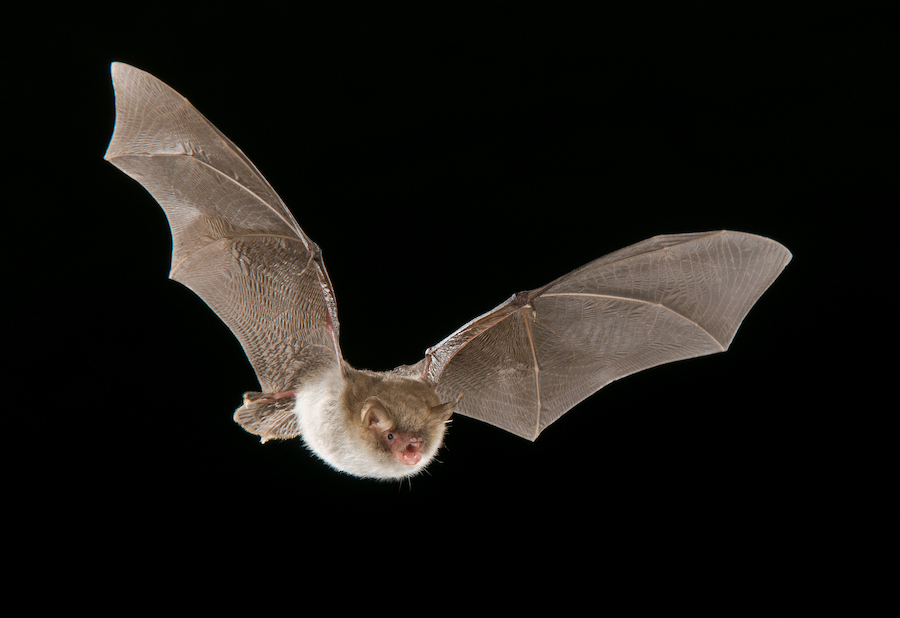
Pictured: Natterer’s in flight (Image credit: Paul van Hoof).
In the winter as the weather cools and insects become rare then bats typically hibernate, which is an extended period of deep sleep (or torpor). A bat’s body temperature lowers, and their metabolic rate slows, so they use less energy and can survive on the fat they have stored up instead of trying to forage for food.
However, because of Guernsey’s relatively warm winters local bats can come out of hibernation for brief periods during winter and have been observed in significant numbers in mid-December. During hibernation bats need roosts that are cool and remain at a constant temperature. In the Bailiwick bats may use some of the natural sea caves around the island. But most make use of the many man-made structures such as military bunkers and tunnels built during the Occupation, Napoleonic towers and quarries.
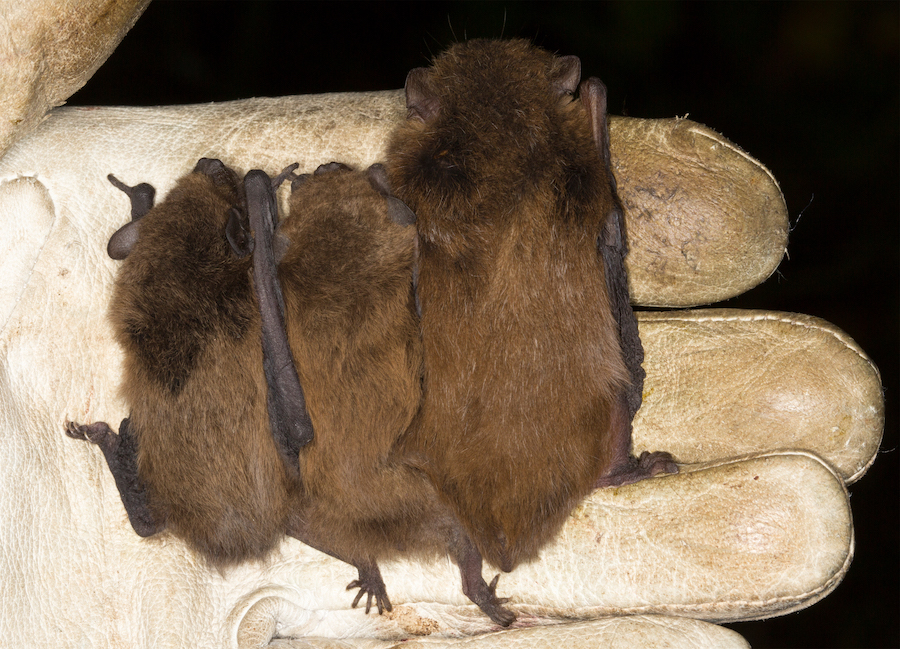
Pictured: Common, Soprano and Nathusius’ Pipistrelles (Image credit: Daniel Hargreaves).
Underground sites are very important for Guernsey’s rarer species of bats and just one or two sites could potentially hold most or all of a population of a particular species in winter. The Bat Section of La Société Guernesiaise, in combination with the Agriculture, Countryside and Land Management Services and the Bailiwick Bat Survey, have been doing research to help understand how these sites are used by bats, and these data are currently being analysed to better inform conservation efforts.
The Bailiwick Bat Survey is entering its third year. During 2021 some 710,260 bat recordings were collected from across the Bailiwick. The results of the first two years have confirmed the presence of 13 bat species: Common Pipistrelle, Soprano Pipistrelle, Kuhl's Pipistrelle, Nathusius' Pipistrelle, Grey Long-eared, Brown Long-eared, Greater Horseshoe, Lesser Horseshoe, Serotine, Noctule, Leisler's, Natterer's, Whiskered (Brandt's). Twelve of these are in Guernsey and the only recorded Soprano Pipistrelle is in Alderney.
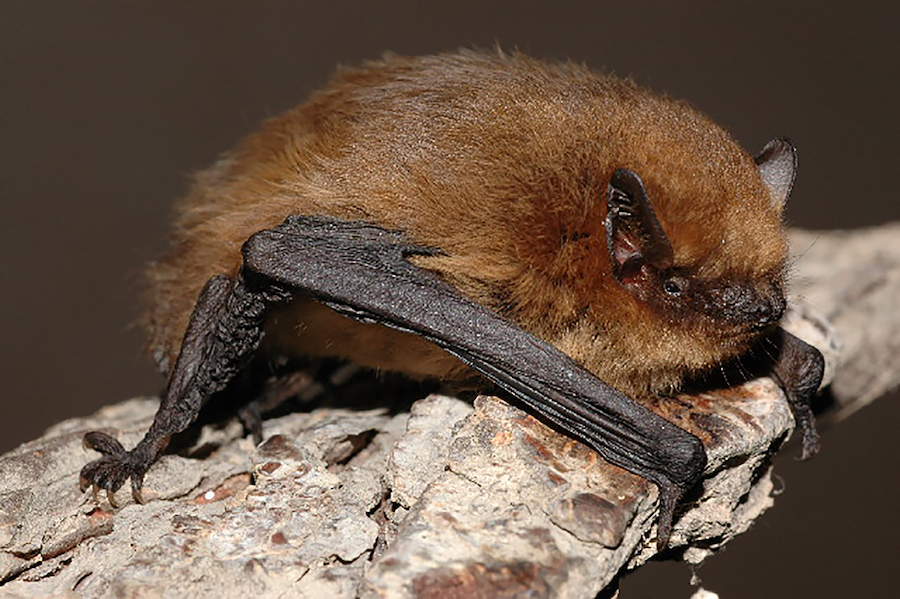
Pictured: Soprano Pipistrelle (Image credit: Evgeniy Yakhontov).
Common Pipistrelles are the most abundant bats in Guernsey. However there exists a little mystery as to where they all go during winter, as there are not enough known hibernation roosts to account for the numbers seen in the summer months. They are crevice as well as cavity dwellers, so are quite happy to settle down in a small crevice rather than needing a large cave. As they are so many - smaller than a box of matches, weighing about 5 grams - less than a 10p coin, there are an enormous number of places that they can hide, for example under slats in roofs, in trees and woodpiles. Pipistrelles are ‘aerial hawkers’, which means they capture insect prey in flight whilst constantly echolocating to pinpoint their prey.
Grey Long-eared bats are the next most common residents in Guernsey but are one of the rarest mammals in Britain as they are typically a southern European species with Guernsey and the southern UK being at the northernmost edge of its range. They are a fairly large European bat and as its name suggests has dis?nc?ve ears, long and with a characteristic fold. The Brown Long-eared bat is common in the UK and most of Europe but rare in the Bailiwick. Its ears are almost as long as its body although, when at rest, it often rolls them up or tucks them under its wings. Long eared bats are not as reliant on sonar as most bats, instead they use their huge ears to listen for the rustling sounds made by moving insects and also use their eyes to spot prey. They have been known to live as long as 22 years, although usually they only reach four or five.
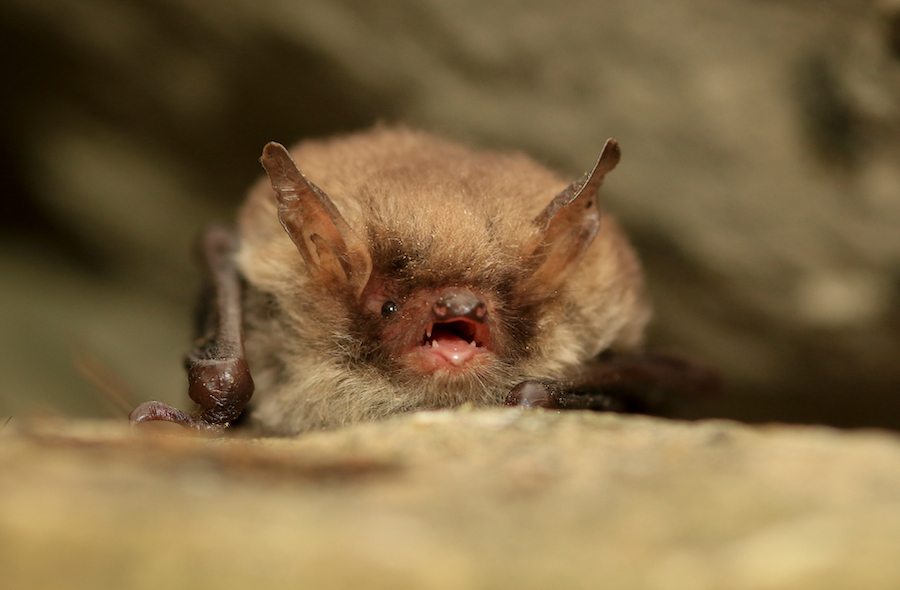
Pictured: Natterer’s Bat (Image credit: Tom Marshall).
Natterer’s Bat are our third most common resident species. They are larger than Common Pipistrelles and are considered a medium size species, weighing up to 12 grams – although still small, their bodies being around the size of a plum, with a wingspan of up to 300mm. Unlike most bats, part of their echolocation calls are in a much lower frequency, dropping to within the human hearing range. If close enough, you might be able to hear them “nattering” away!
They feed on midges, moths and other flying insects but may also forage on beetles and spiders that they take directly from foliage. Their flight is relatively slow and they can be found hunting over water and among the trees after sunset. They tend to hibernate alone or in small groups and spend the winter in caves and tunnels or rock crevices and move in the spring to warmer roosts in tree holes, buildings or bat boxes.
Pictured: (l) Greater Horseshoe (Image credit: Mike Symes) and (r) Lesser Horseshoe (Image credit: Paul van Hoof).
The rare Greater and Lesser Horseshoe bats get their name from unusual shaped skin flaps around their noses that resemble a horseshoe and serve to funnel their echolocation calls forwards. They are rare in the UK and extremely rare in the Bailiwick with only one Lesser Horseshoe being recorded in 2021.
The body of the Greater Horseshoe is the largest of all the Horseshoe bats and is about the size of a pear and may weigh up to 34 grams, while the Lesser Horseshoe is one of the smaller bats, weighing just 5- 9 grams. They typically form large clusters within a few key roosts, hanging from their feet and preferring roof spaces or caves.
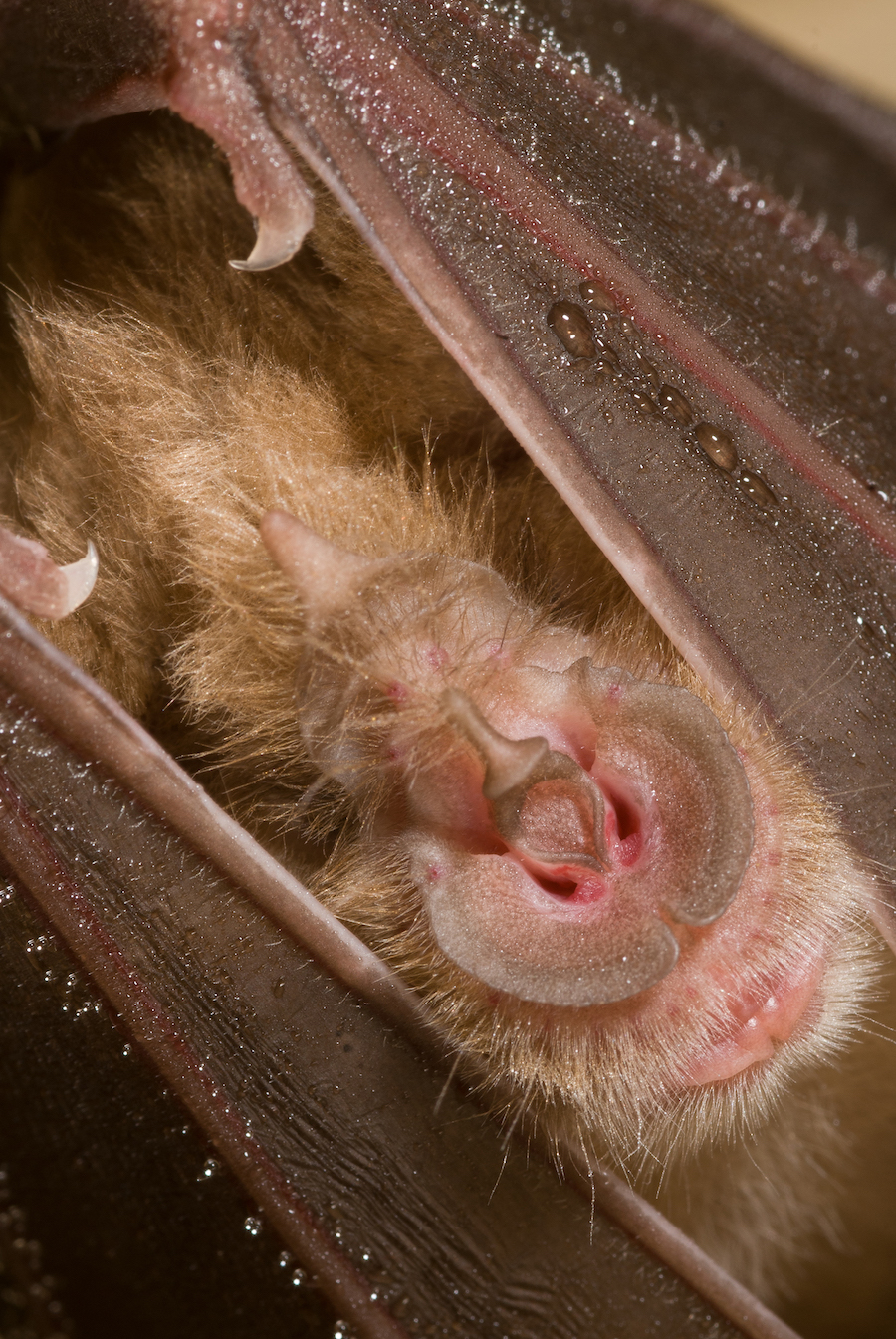
Pictured: Greater Horseshoe (Image credit Paul van Hoof).
Like the Pipistrelles they are aerial hawkers, resulting in dramatic foraging scenes as they use their broad, round wings to capture airborne prey in tight manoeuvres. The heavier Greater Horseshoe will also have a favourite perch from which it can swoop in to capture airborne insects or take ground-dwellers such as spiders.
The more agile Lesser Horseshoe will constantly circle a favourite area, flying less than five metres from the ground to startle small insects and then catch them in-flight. Larger prey is taken to a temporary night roost or is eaten as the bat hangs from a tree. Greater Horseshoe bats have been known to live 30 years and the Lesser Horseshoes over 20 years. They were extremely rare and endangered in the 1950s, this was thought probably due to pesticide use such as DDT. Populations have started to recover, but threats from habitat fragmentation and loss of building and cave roosts mean that they are still considered a “priority species” for conservation efforts.
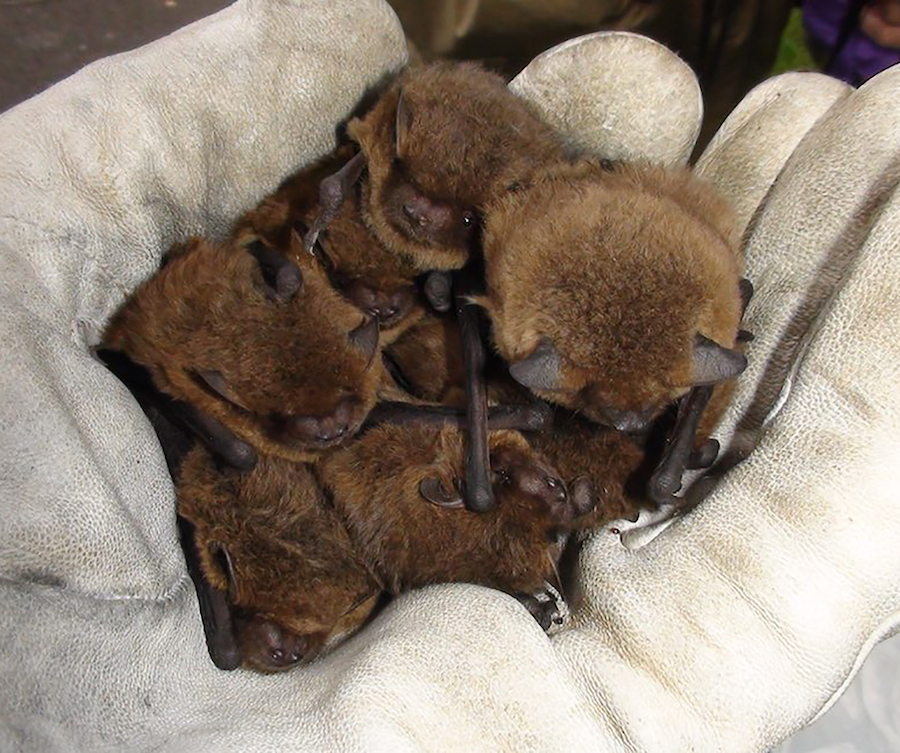
Pictured: Soprano Pipistrelles found during a bat box check (Image credit: Daniel Hargreaves).
Some of the Bailiwick bats are thought to be seasonal visitors. Serotine bats have only been recorded between May and October – although this may be down to rarity of this bat rather than it not spending winter here. However, genetic analysis of Serotine bats in the UK and France has shown that they do cross the English Channel. They are one of the larger British bats weighing between 15 to 35 grams. They can make a squeaking sound just before emerging at dusk to hunt. Serotines like to eat flies, moths and beetles – particularly Maybugs.
They are capable of both catching insects in flight and plucking them from the ground or on vegetation. Serotines are also known to feed near lamp posts, where moths have been attracted to the light. The Nathusius' Pipistrelle is rare in Guernsey and the UK and is probably a migrant winter visitor from mainland Europe, they can fly many hundreds of kilometres during late autumn and spring.
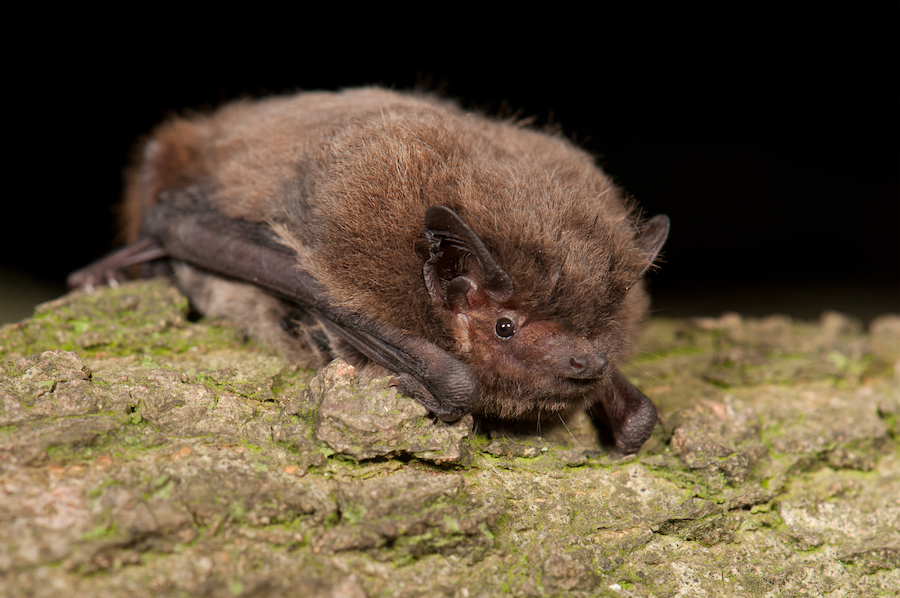
Pictured: Nathusius’ Pipistrelle (Image credit: Paul van Hoof).
Bats are amazing animals in their own right, but they are also important ‘indicator species’ and their presence and numbers within a habitat shows how healthy that habitat is. For example, bats are one of the main predators of night flying insects and unfortunately insect numbers are decreasing which is of great concern because this can have a devastating impact on biodiversity, food supplies and economies. Although the bat is one tiny piece of a much larger puzzle, managing the landscape for them provides a multitude of benefits for other species. The species rich grasslands that they require, as well as all important hedgerow connectivity throughout the landscape, benefits not just bats but birds, small mammals and insects, thus providing a range of other ecosystem services.
In Guernsey bats are protected under Animal Welfare legislation. This means that you must not knowingly kill, injure or disturb them. If you think you might have bats on your property then you can contact La Société Guernesiaise or Guernsey Environmental Services Limited who will be happy to visit your property and offer advice about the species and how to best protect them, particularly if you are about to undertake building work on your property as it might disturb them. Contact details are: telephone 01481-725093, or alternatively please email info@societe.org.gg or jamie.hooper@cwgsy.net.
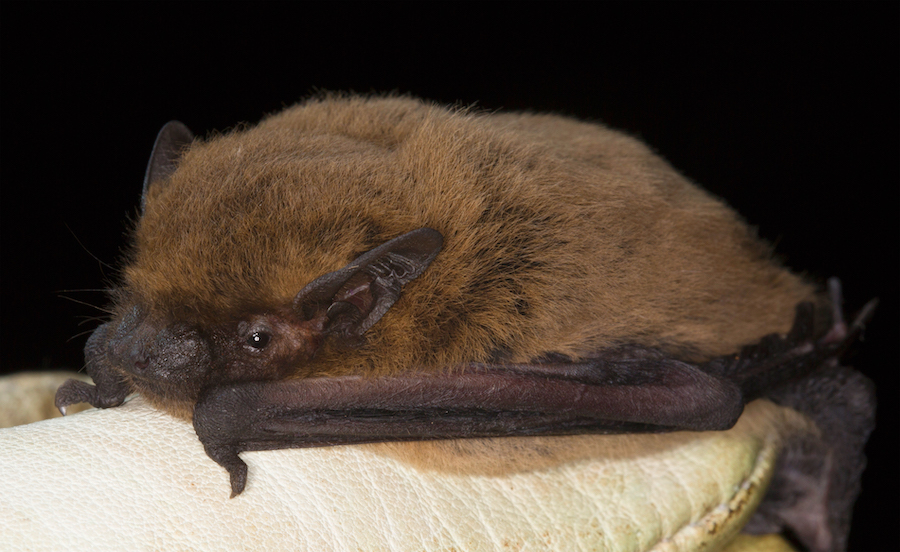
Pictured: Kuhl’s Pipistrelle (Image credit: Daniel Hargreaves).
Now is a great time to get out and look for bats, as they are often very active. The Guille-Allès library have bat monitors and identification sheets that can be borrowed at no cost. The best time to go out and have a look is 20 minutes before sunset or sunrise, until 20 minutes aAer, on a dry night with little wind. The best place is anywhere without artificial lights. Bats can be seen in gardens, parks and fields. They do prefer features such as hedges, trees, streams and ponds, and tend to avoid large open spaces. If you would like to come on an organised bat walk, then La Société Guernesiaise Bat Section regularly organise walks throughout the summer, and we would love for you to join us. You can find details of upcoming events on our website: societe.org.gg.
You don’t need to be a bat expert to become a citizen scientist and help with the 2023 Bailiwick bat survey. It started at the beginning of April to coincide with the normal increase in activity that occurs around this time, as the bats begin to shake off their winter torpor and really start to feed and explore. This citizen science project is now in its third year, and a wealth of data has been collected to date. During 2021 some 720,011 recordings were collected across the Bailiwick of Guernsey which, following analyses and validation, included 710,260 bat recordings, and 8,211 small terrestrial mammal recordings. There is still time to take part – find out more at Bailiwick Bat Survey: bats.org.gg.
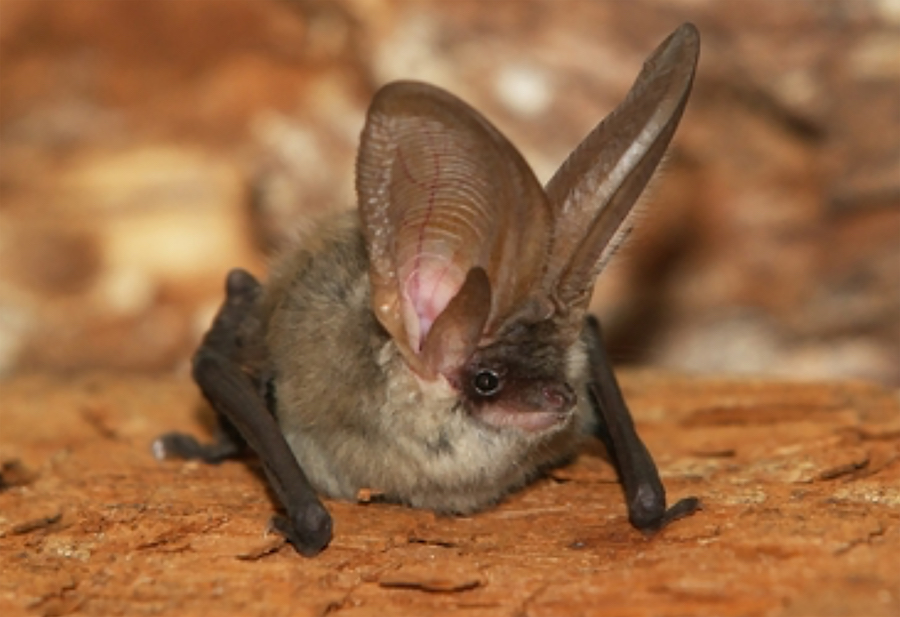
Pictured: Grey Long-eared (Image credit: Rudo Jureček).
You can also help by letting the Bat Section know if you have or suspect a maternity roost in your house or buildings so we can add your property to our roost register by emailing us at: bats@societe.org.gg.
Other ways in which you can help bats include: reducing the use of pesticides, plant night scented flowers, let a patch of garden go wild and reduce light pollution wherever possible.
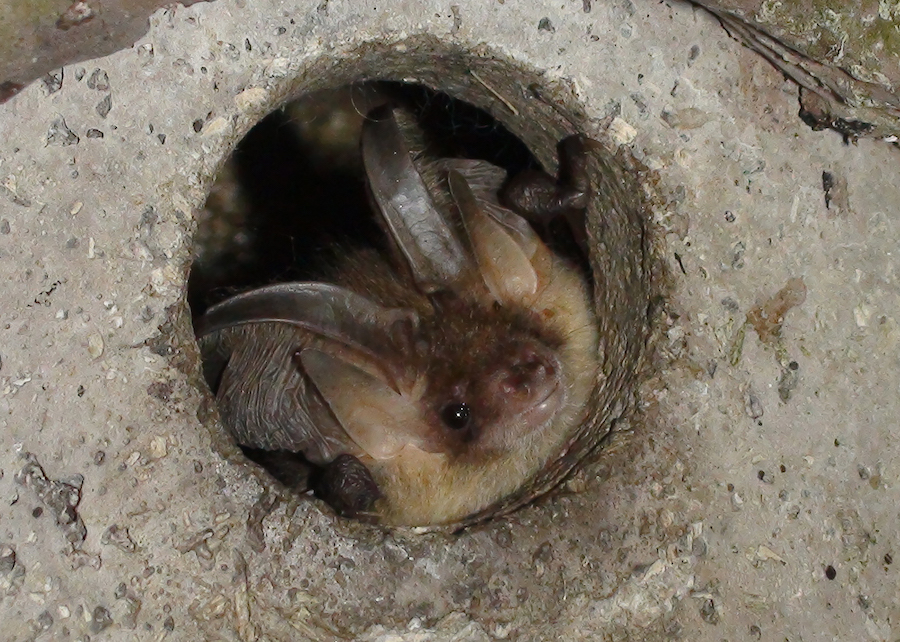
Pictured: Brown Long-eared in a box (Image credit: Daniel Hargreaves).
For those of you with an interest in Guernsey’s natural environment and heritage why not join La Société. Annual membership ranges from just £5 for a student to £34 for a family and thereafter, the Bat Section is free to join so you will get notified of all events.
Pictured top: Brown Long-eared (Image credit: Tom Marshall).
Comments
Comments on this story express the views of the commentator only, not Bailiwick Publishing. We are unable to guarantee the accuracy of any of those comments.